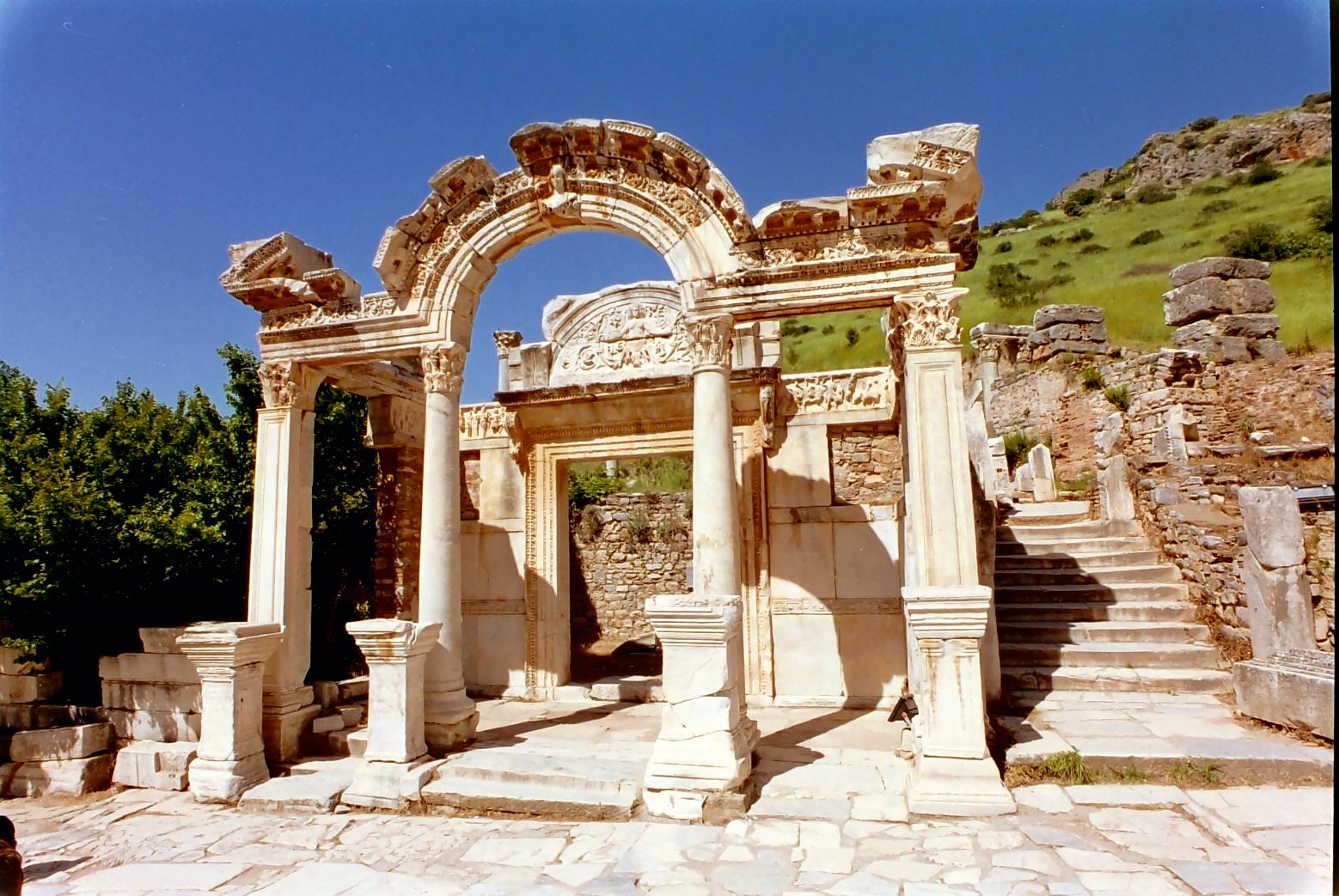EPHESUS - PAMUKKALE 1 NIGHT 2 DAYS BY FLIGHT
itinerary
day 1
Early morning pick up from hotel. Transfer to airport in Istanbul
Flight to Pamukkale. Pick up from airport and continue to cascade pools ;
Pamukkale, is a unique, magical wonder of the nature with its dazzling white and stoned castles. The thermal waters with limestone and salt, pouring by the bank of the plateau form up these marvelous stalacites, waterfalls and pools. These healing warm waters have been used for therapy since the Roman time. Visitors are allowed to walk in the cascading pools, that leads to squashing and dispersing the soft jelly of calcium carbonate.
Hierapolis, is on the same plateau with the thermal pools. provides visitors with a glimpse of the natural gifts of the region and cultural riches that man added to nature. The ancient city, situated 20 kilometres North of Denizli, is justly famous for the buildings and artefacts unearthed during extensive excavations. Hierapolis is known as the ‘Sacred City’ on account of its many temples and religious buildings. The geographers of antiquity, Strabo and Ptolemy, claimed that Hierapolis was a Phrygian city, because of its proximity to Laodicea on the Lycus and Tripolis, cities situated on the border with the Caria region.
Red Water Springs, at the North of Pamukkale in Karahayit Village. Due to having much higher content , the water appear red. The water also much hotter than Pamukkale water. You can enjoy seeing the water comes from the travertines in red color.
End of tour transfer to bus. Bus to Ephesus(takes 3 hours) . After arriving check in to Hotel. Overnight in Selcuk/Kusadasi .
day 2
Breakfast served at the hotel . Morning pick up from Hotel and continue to :
Ephesus Ancient City, an outstanding example of a Roman port city, with sea channel and harbour basin. It was Hellenic Greece capital city and was the capital of the Roman Empire’s province of Asia. Ephesus was economically, geographically, politically and culturally significant. Many famous classical philosophers who are still read today such as Heraclitus, lived in the scientific, cultural and artistic city of Ephesus.
After enter through the Magnesia Gate and begin a slow downhill walk with your guide . Your route takes you to the Odeon(Concert Hall), The Baths of Varius(used as a Gymnasium), Prytaneion(administrative offices also where religious ceremonies, official receptions and banquets were held), Agora(commercial market of Ephesus), The Temple of Hadrian(dedicated to Emperor Hadrian, Artemis and the people of Ephesus), The Fountain of Trajan(constructed for the honor of Emperor Trajan) and the Great Theatre. The theatre had seating for 24.000 which was the site where it is believed St. Paul preached to the Ephesians and is used today for a local spring festival.
Celsus Library, the most distinctive building and one of the most photographed structure that is commonly associated with Ephesus. It was erected by Gaius Julius Aquila(son of Tiberius Julius Celsus Polemaeanus). Assumed that the constrcution was completed in 117 A.D. It is made of very good marble and decorated with figures of Eros, Nike, rosettes and garlands in relief.
Hose of Virgin Mary, is close to the peak of Bülbül Mountain, one of the hills overlooking Selçuk. After the death of Jesus Christ, Virgin Mary had gone to Ephesus with Saint John and lived here since then on until her death at the age of 101.Thus this church is an important pilgrimage center for Christians. There is also a spring believed to be healing. The Popes Paul VI and Jean Paul II visited this house. The House of Virgin Mary is declared to be sacred and an important pilgrimage spot visited by Christians from all over the world.
The Temple of Artemis, was in its day the largest in the world, eclipsing even the Parthenon at Athens, and thus earning a spot on the list of the Seven Wonders of the Ancient World. Only one of its original 127 columns remains, often as not topped by a stork’s nest; a poignant testament to the transitory nature of human achievement. Still it is a lovely tranquil place, the enormous pillar giving you some indication of the vast size of temple.
Isa Bey Mosque, with the order of Aydinogullari Emirate Isa Bey, was built in 1375. It is a nice sample of Seljuk Turkish architecture. It is on the western side of Ayasuluk Hill on which stand the fortress and the church of Saint John.
End of tour, transfer to airport . Flight to Istanbul. After arriving transfer to Hotel .

